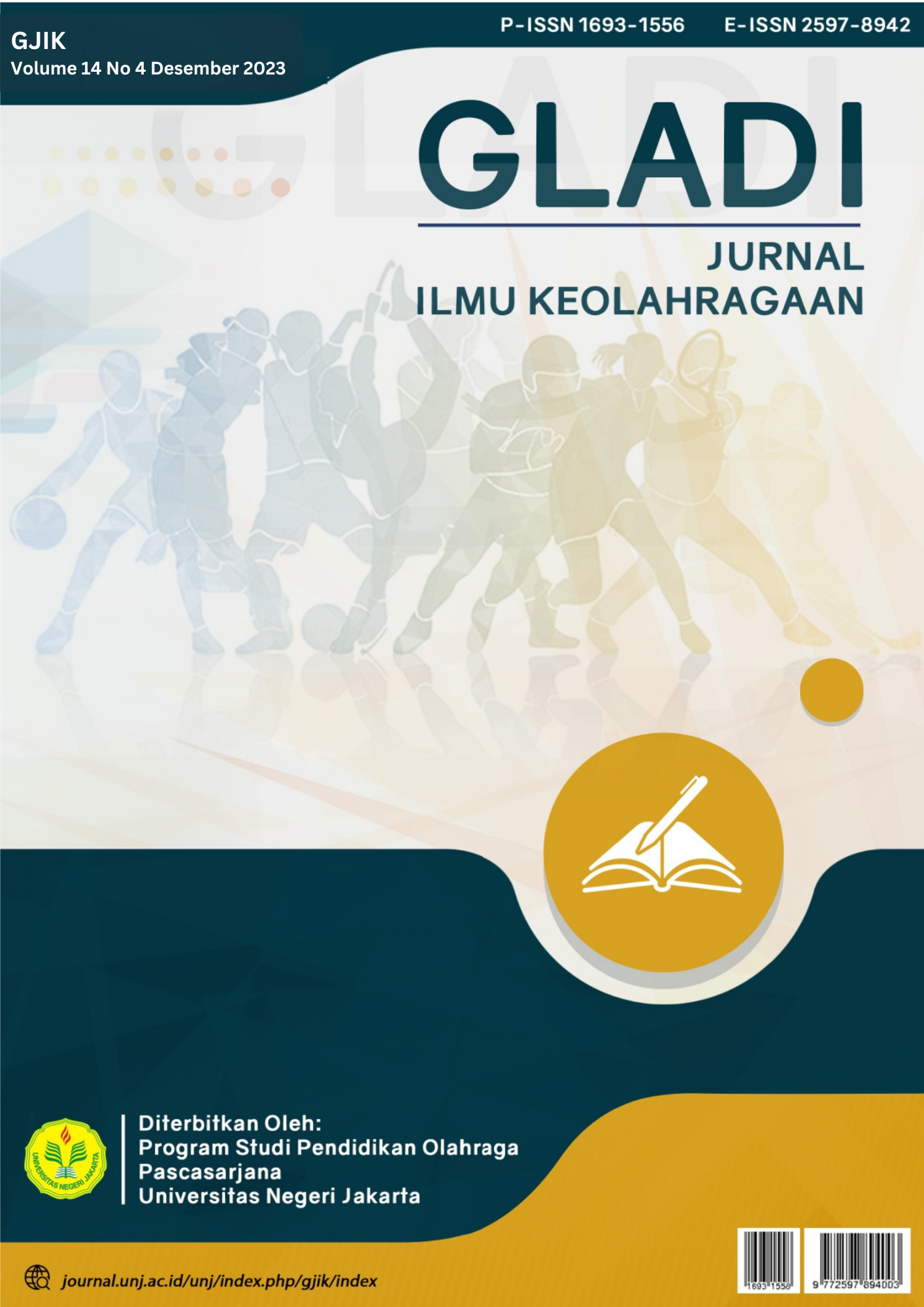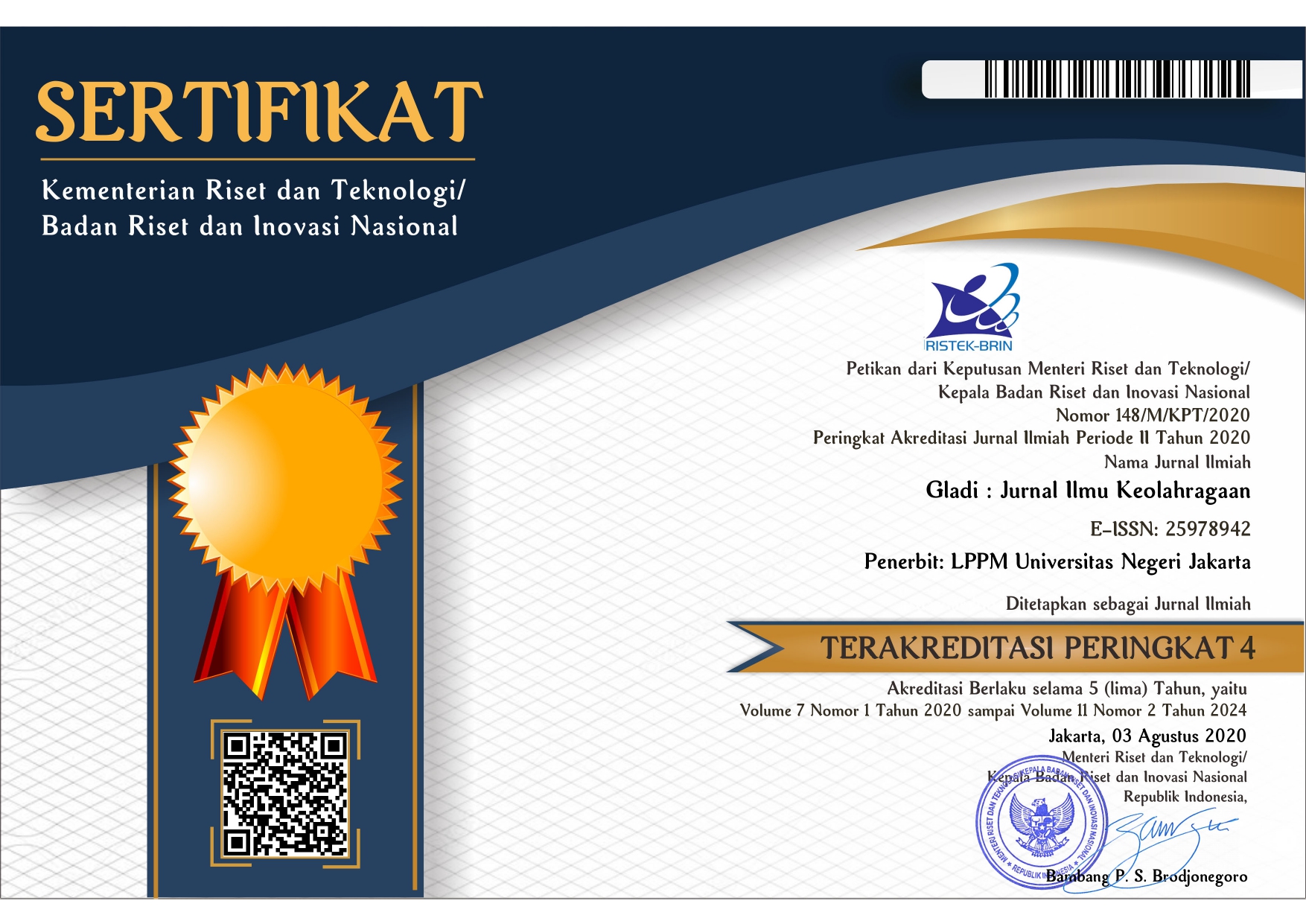The Butterfly Style Swimming Learning Model for Children in the 5 Year Old Group
DOI:
https://doi.org/10.21009/GJIK/144.09Keywords:
learning models, skills, swimming butterfly styleAbstract
The purpose of this study was to produce and test a butterfly stroke swimming learning model for age group 5. The research method uses research and development methods adopted from the theory of Borg & Gall. There are ten steps used in this study, namely needs analysis, initial product development, expert evaluation, small group trials, product revisions, large group trials, product revisions, effectiveness tests, revisions, and the final product. The research subjects were WSC Cirebon children aged 5, totaling 15 subjects in small group trials, large group trials of 40 novice athletes and 40 subject effectiveness tests conducted on children aged 5 at the WSC Cirebon club. The data analysis technique used in this study to test the effectiveness of the model is the normality test, homogeneity test and independent sample-test. The results of the research produced a product in the form of learning to swim the butterfly style for the age group 5. For the age group 5, 28 training models had been validated and revised by experts. The implication of this study is that the learning model is feasible and effective for use for 5 year olds in improving butterfly swimming skills.
Downloads
References
Nachtigal, J., Kim, M., Lee, K., Seidler, T., & Stocz, M. (2016). Softball: Nothing Soft about It. Journal of Physical Education, Recreation & Dance, 87(9). https://doi.org/10.1080/07303084.2016.1226220
Singh, K. M. (2017). Association of physiological parameters with the throwing performance among the male softball players. International Journal of Yogic, Human Movement and Sports Sciences, 2(5), 602–605.
Aswathy, V. (2018). The Relation between Hand Grip Strength with Hand-Anthropometric Variable in Inter-University Level Softball, Cricket and Hockey Players. International Journal of Recent Scientific Research, 9(4(H)).
Saraya, A. E. (2018). Anthropometric Factors and Physical Condition Dominant Determinants Batting Skills In Softball. Jurnal Pendidikan Jasmani Dan Olahraga, 3 (1), 74. https:// doi.org/10.17509/jpjo.v3i1.10331
Mashuda, I., & Purnomo, M. (2013). Kontribusi konsentrasi, kekuatan otot lengan, kekuatan otot kaki, kelentukan punggung terhadap pukulan ke arah outfield olahraga softball. Jurnal Prestasi Olahraga, 1(1).
Prakoso, F. A., Sridadi, S., & Sudarko, R. A. (2017). Hubungan Antara Koordinasi Mata dan Tangan Terhadap Ketepatan Lemparan atas Softball Anggota UKM Baseball-Softball UNY. Journal Student, VI(10), 1–7. https://journal.student.uny.ac.id/ojs/index.php/pjkr/article/view/7432
Singh, K. M., Singh, M., Singh, P., & Choundhary, A. (2017). Relationship between the Anthropometric Variables and Throwing Skill in Male Softball Players. European Journal of Physical Education and Sport Science, 3(10), 198–208. https://doi.org/10.5281/zenodo.999998
Rahman, L. (2019). Kontribusi Power Lengan, Fleksibilitas Sendi Bahu dan Koordinasi Gerak Terhadap Ketepatan Lemparan Atas dalam Softball. Jurnal Kependidikan Jasmani Dan Olahraga, 3(1), 17–23.







